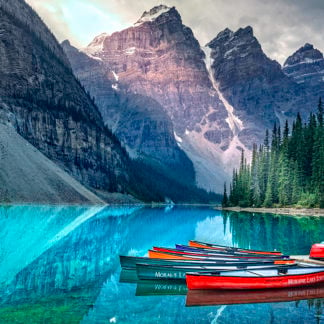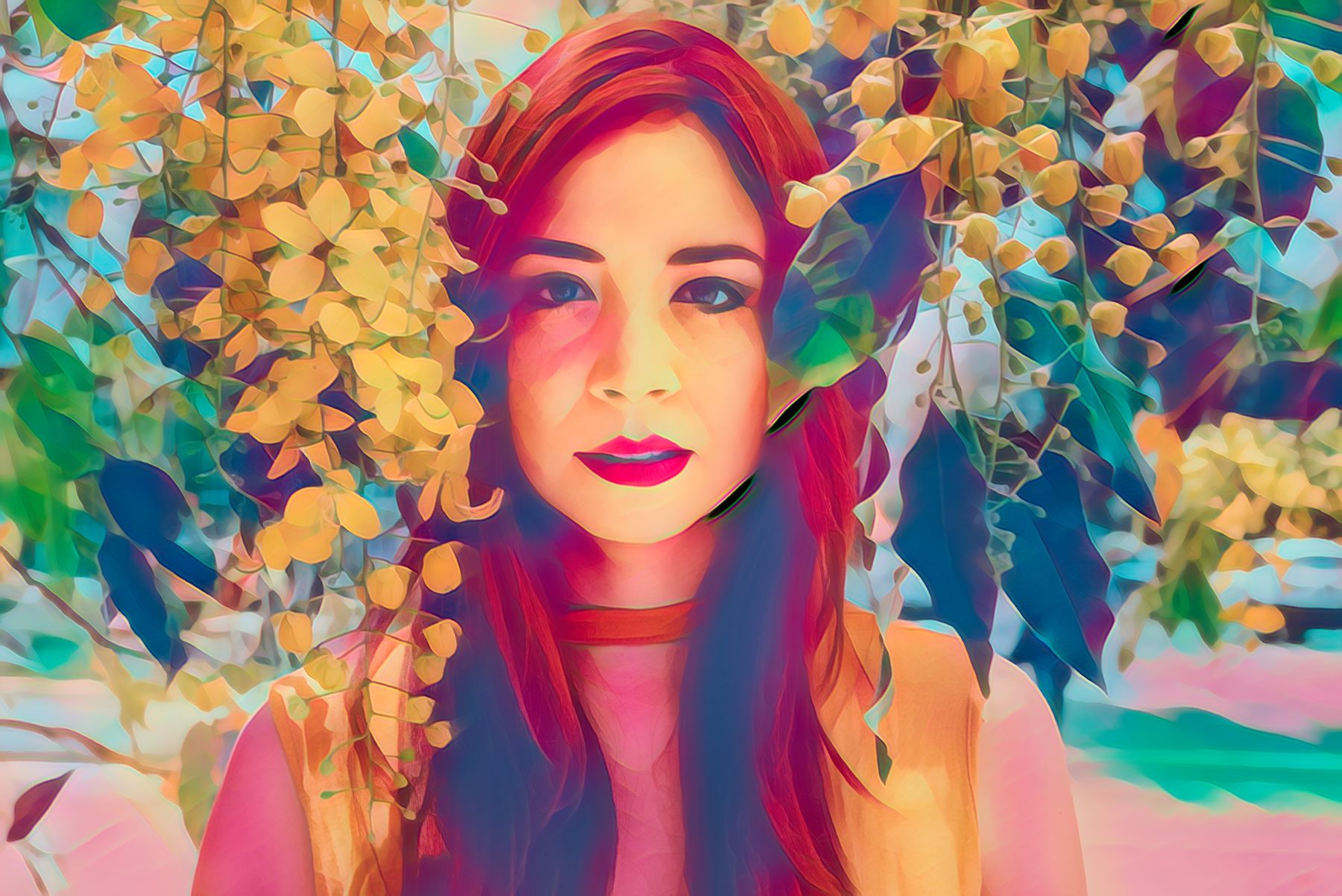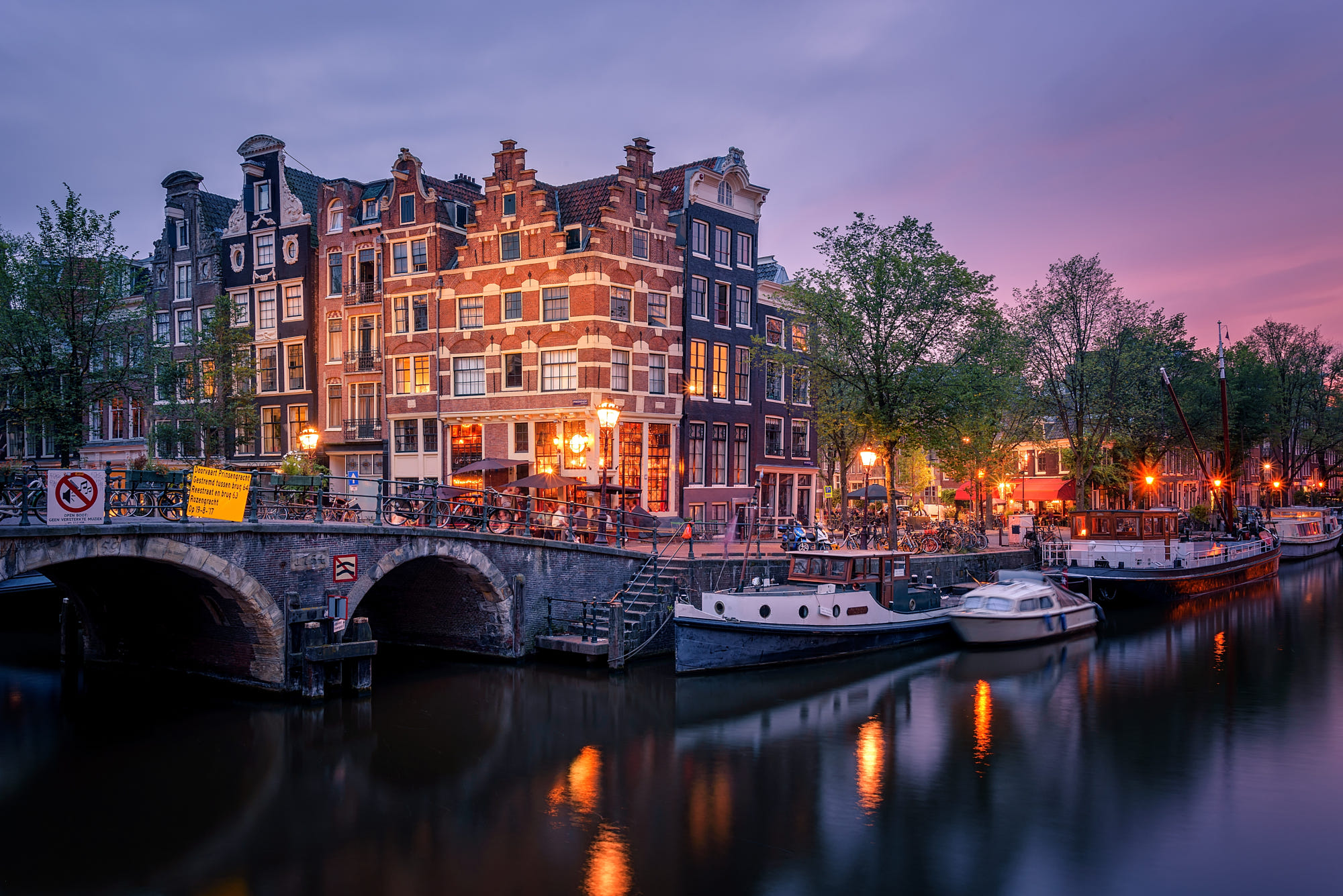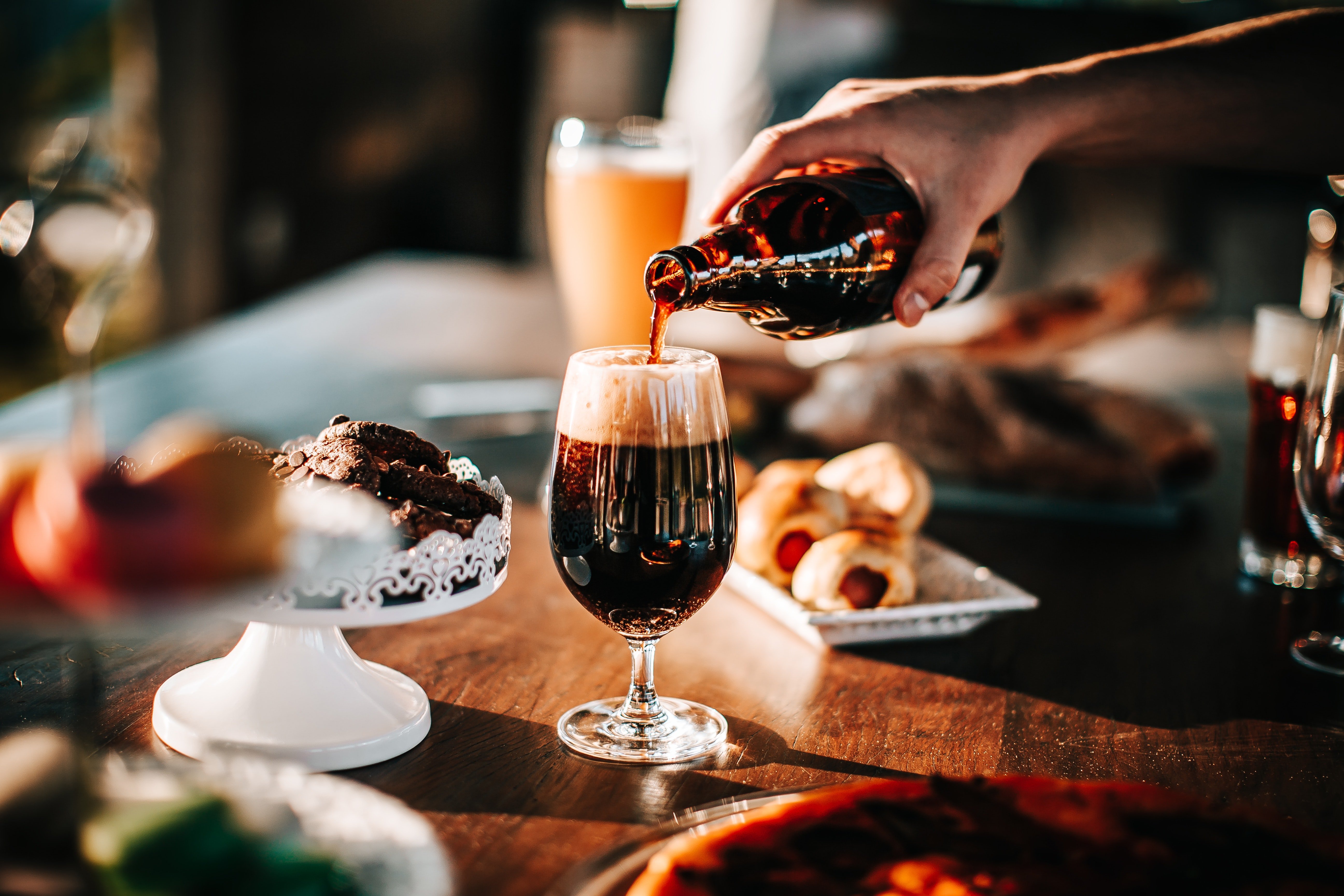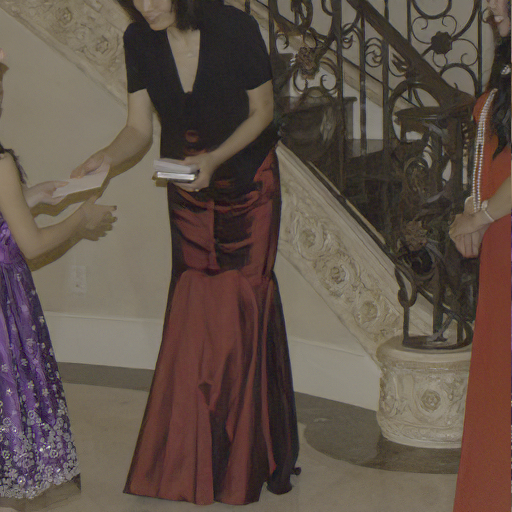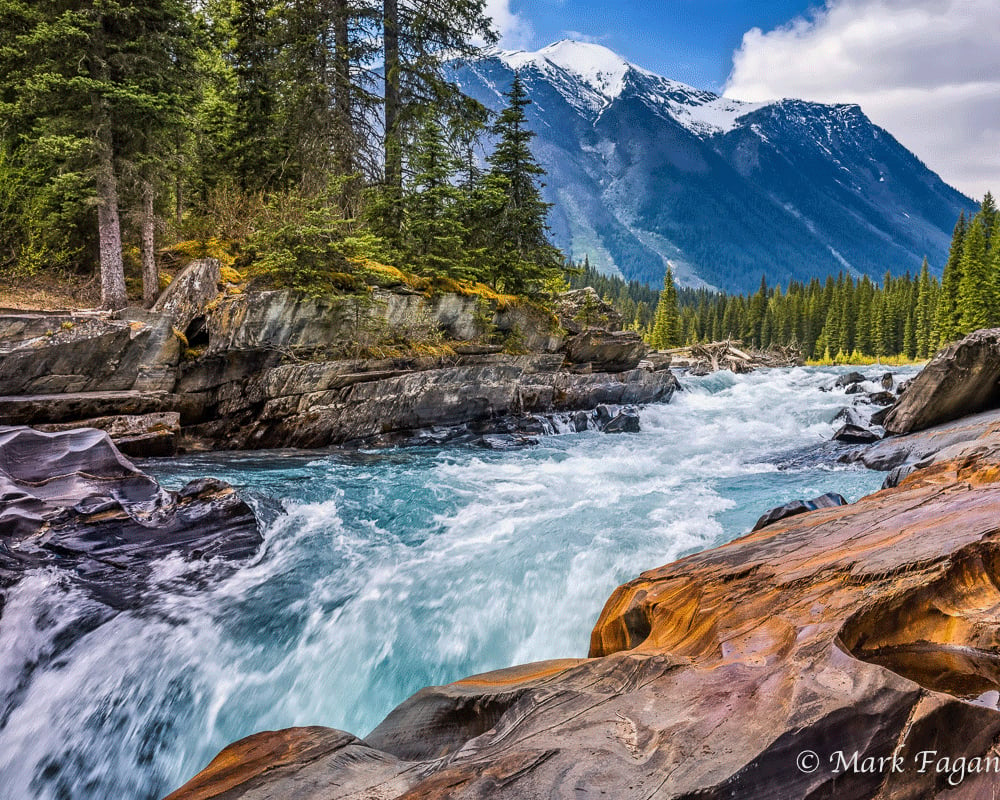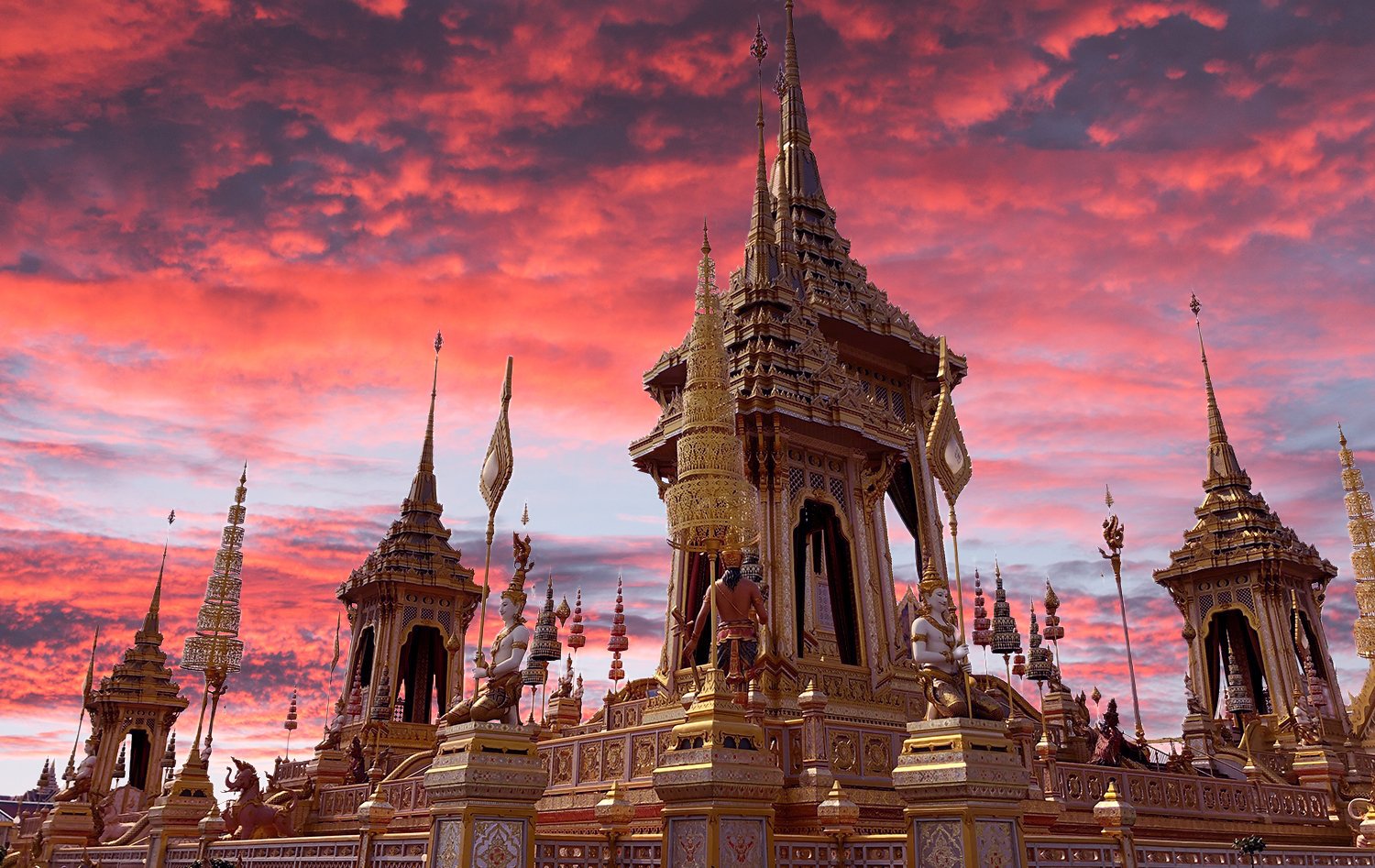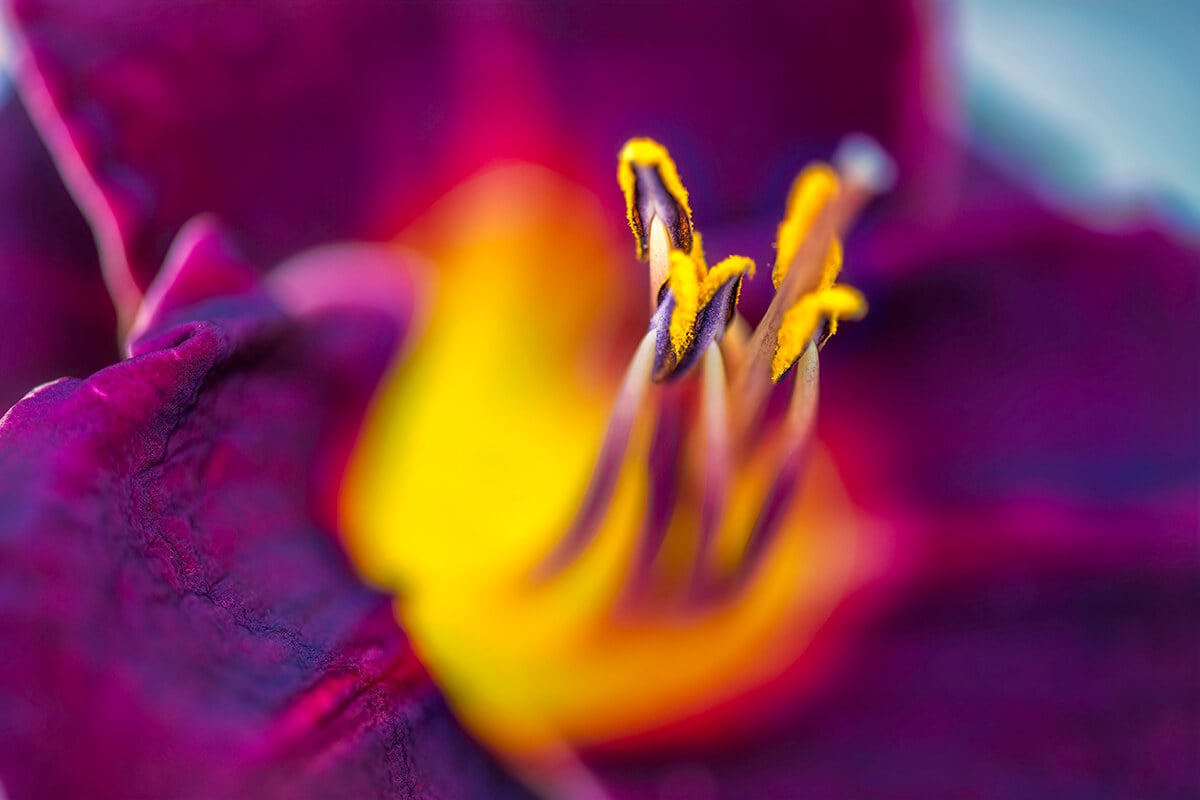
Hi everyone! There’s been a few questions popping up about how to use the all new Topaz Studio like “What are Adjustments?” and “How do I add an Adjustment and what should I do with it?”
To help get you started, I’ll be going over the most useful and popular Adjustment in Topaz Studio, the Basic Adjustment! This Adjustment is a great starting point for correcting exposure and color in images. You can learn more about the Basic Adjustment on the Basic Adjustment Information Page but, if you’re ready to get started now, you can follow along with this entry level introduction to learn more and to start working immediately on your own images.[vc_row][vc_column][vc_empty_space][vc_column_text]
Overview of the Basic Adjustment
[/vc_column_text][vc_empty_space height=”15px”][vc_column_text]Topaz Studio is a simple to use editing platform with Topaz Labs’ powerful acclaimed photo enhancement technology. It works as a standalone editor, a plugin within Lightroom and Photoshop, as well as a host application for your other Topaz plugins. It is free to use the program, all 1-click effects, and 10 Adjustments.
The Basic Adjustment is one of 10 free Adjustments within Topaz Studio! You can get access to all the common tools you need to balance your exposure, correct color, and control image detail. Feel free to follow along as I show you how you can correct images in this beginner level tutorial.
Don’t have Topaz Studio? Topaz Studio is free to download! You can get it now by using the links below. If you need more information about Topaz Studio, check out this overview: Introducing Topaz Studio[/vc_column_text][/vc_column][/vc_row][vc_row][vc_column][vc_empty_space][vc_column_text]
Free Topaz Studio Download
[/vc_column_text][vc_empty_space height=”15px”][vc_row_inner][vc_column_inner width=”1/2″][vc_btn title=”Windows” shape=”square” color=”primary” align=”center” button_block=”true” link=”url:https%3A%2F%2Ftopazlabs.s3.amazonaws.com%2Ftopazstudio_online_installer.exe|||”][/vc_column_inner][vc_column_inner width=”1/2″][vc_btn title=”Mac” shape=”square” color=”primary” align=”center” button_block=”true” link=”url:https%3A%2F%2Ftopazlabs.s3.amazonaws.com%2Ftopazstudio_online_installer.dmg|||”][/vc_column_inner][/vc_row_inner][/vc_column][/vc_row][vc_row][vc_column][vc_empty_space][vc_column_text]
What You’ll Need
[/vc_column_text][vc_empty_space height=”15px”][vc_column_text]This introduction tutorial is really easy to follow along with but you will need just a few things if you’d like to follow along with me:
1. Topaz Studio. You’ll need Topaz Studio on your computer if you’d like to follow along during this tutorial.
2. An Image. Grab an image to follow along and try it out for yourself.
3. About 10 minutes. This beginner’s level tutorial will only take about 10 minutes to complete.
I’m going to teach you about each slider and what it does but it’s up to you to decide what looks good on your image! Ready to go? Let’s get started![/vc_column_text][/vc_column][/vc_row][vc_row disable_element=”yes”][vc_column][vc_empty_space][vc_column_text]
Open an Image
[/vc_column_text][vc_empty_space height=”15px”][vc_column_text]Once you open Topaz Studio, you’ll notice that a lot of the sections are empty and a lot of options are unavailable. This is because you’ll need to open an image to get started! There are a few various ways to open up an image.
- Drag and drop an image from your computer into the program.
- Click Open (located in the Canvas) and navigate through your files. Select an image and click Open.
- Click Open in the menu bar. Select an image and click Open.
- Go to Menu > File > Open Image… and then select an image and click Open.
- Use your shortcut keys (such as Command O or Control O).
[/vc_column_text][vc_empty_space height=”15px”][vc_single_image image=”11108″ img_size=”full” alignment=”center”][vc_column_text]
Drag and drop an image from your computer.
[/vc_column_text][vc_empty_space][vc_single_image image=”11116″ img_size=”full” alignment=”center”][vc_column_text]
An opened image in Topaz Studio.
[/vc_column_text][vc_empty_space][/vc_column][/vc_row][vc_row disable_element=”yes”][vc_column][vc_column_text]
Customize the Sections
[/vc_column_text][vc_column_text]We won’t be using the Effects Panel (left hand side) or the Image Browser (bottom of the program). Close these sections by clicking on the collapse bar. You can always reopen them by clicking again.[/vc_column_text][vc_empty_space height=”15px”][vc_single_image image=”11120″ img_size=”large” alignment=”center”][vc_column_text]
Where to click to close sections in Topaz Studio.
[/vc_column_text][vc_empty_space][/vc_column][/vc_row][vc_row][vc_column][vc_empty_space][vc_column_text]
Step 1: Add the Basic Adjustment
[/vc_column_text][vc_empty_space height=”15px”][vc_column_text]There are a few different ways to add the Basic Adjustment in Topaz Studio.
- Click the Basic Adjustment icon in the Adjustment Buttons (pictured here). All 10 free adjustments are located here.
- Click the More Button in the Adjustment Buttons to show a list for all Adjustments. Click Basic Adjustment to add it to your Adjustment Stack.
- Go to Menu > Adjustment > Basic Adjustment to add the Basic Adjustment.
[/vc_column_text][vc_empty_space height=”15px”][vc_single_image image=”11124″ img_size=”large” alignment=”center”][vc_column_text]
Click the Basic Adjustment icon in the Adjustment Buttons.
[/vc_column_text][vc_empty_space height=”15px”][vc_single_image image=”11126″ img_size=”large” alignment=”center”][vc_column_text]
The Basic Adjustment in Topaz Studio.
[/vc_column_text][vc_empty_space height=”15px”][/vc_column][/vc_row][vc_row][vc_column][vc_column_text]
Adjustment Overview
[/vc_column_text][vc_empty_space height=”15px”][vc_row_inner][vc_column_inner width=”1/4″][vc_single_image image=”46270″ img_size=”full” alignment=”center”][/vc_column_inner][vc_column_inner width=”3/4″][vc_column_text]The Basic Adjustment might look intimidating because there’s a lot going on but it’s very simple to use! The Basic Adjustment features Integrated Masking, Blending Modes, an Opacity Slider, Adjustment Level Presets, and sliders. The sliders are Exposure, Clarity, Shadow, and Highlight. There’s also Saturation, Temperature, and Tint. Usually, sliding to the left is “less” while sliding to the right is “more”. I’ll be going into each slider’s function in depth so read on to learn more![/vc_column_text][/vc_column_inner][/vc_row_inner][vc_empty_space][/vc_column][/vc_row][vc_row][vc_column][vc_column_text]
Adjustment Level Presets
[/vc_column_text][vc_column_text]Every Adjustment in Topaz Studio has Adjustment Level Presets. These Presets are a great place to start when editing an image. You can see each slider change when you roll over a different Preset. To commit a Preset, simply Click the Preset Name that you like.
Try it Out: Click on the Adjustment Level Presets and see how they affect your image! Once you see how the Presets change your image, Reset the Adjustment. To completely Reset your image, which deletes all Adjustments used, click Reset in the bottom right corner of the program.[/vc_column_text][vc_empty_space height=”15px”][vc_single_image image=”11128″ img_size=”large” alignment=”center”][vc_column_text]
Basic Adjustment Presets.
[/vc_column_text][vc_empty_space][/vc_column][/vc_row][vc_row][vc_column][vc_column_text]
Make Custom Changes
[/vc_column_text][vc_column_text]The Topaz Studio Basic Adjustment is a great starting point to adjust and correct image tone and color. Postproduction is made easy with 4 exposure related value sliders and 3 color effect related sliders. Making custom changes to any Adjustment is fast and easy. Simply click and drag a slider to make a change.
Let’s take an in depth look at what the sliders do in the Basic Adjustment. Now that you know how to Reset your image (remember, bottom right hand corner!) you can make changes without any fear of commitment. You can also use the Undo/Redo buttons in the bottom right of the program.[/vc_column_text][vc_empty_space][/vc_column][/vc_row][vc_row][vc_column][vc_column_text]
Exposure Related Sliders
[/vc_column_text][vc_empty_space height=”15px”][vc_single_image image=”11131″ img_size=”large” alignment=”center”][vc_column_text]
Basic Adjustment Exposure Related Sliders.
[/vc_column_text][vc_empty_space][/vc_column][/vc_row][vc_row][vc_column][vc_row_inner][vc_column_inner width=”2/3″][vc_column_text]
Exposure Slider
[/vc_column_text][vc_empty_space height=”15px”][vc_single_image image=”11132″ img_size=”large”][/vc_column_inner][vc_column_inner width=”1/3″][vc_empty_space][vc_column_text]You can easily update the overall exposure of the image by adjusting the Exposure slider. Simply increase the value of the Exposure slider and the image will become lighter. By decreasing the value, the overall image will become darker. No matter what you do, you’ll never lose color or image integrity, even with extreme adjustments.
Try it Out: Click on the handle (the white dot) and slide it around to see how your image is affected. You can also manually type in values from -1.00 to 1.00, use your arrow key to change the value .01 at a time, or click on the slider to move the handle there instantly. To reset the slider, put it on 0.00. You can also click the Slider Title to reset it.[/vc_column_text][/vc_column_inner][/vc_row_inner][vc_empty_space][/vc_column][/vc_row][vc_row][vc_column][vc_row_inner][vc_column_inner width=”2/3″][vc_column_text]
Clarity Slider
[/vc_column_text][vc_empty_space height=”15px”][vc_single_image image=”11133″ img_size=”large” onclick=”link_image”][/vc_column_inner][vc_column_inner width=”1/3″][vc_empty_space][vc_column_text]The Clarity Slider is one of my personal favorites! You can make your image soft and smooth or detailed or even HDR-like! Clarity’s microcontrast technology emulates a skilled retoucher’s method of selectively brightening and darkening parts of your image. Bring out details in images by increasing the value of the slider. To soften image details simply decrease the Clarity slider.
Try it Out: Move the handle all the way to -1.00 to see how smooth and clean your image can look. Then, move the slider to 1.00 and you’ll see how detailed your image can become.[/vc_column_text][/vc_column_inner][/vc_row_inner][vc_empty_space][/vc_column][/vc_row][vc_row][vc_column][vc_row_inner][vc_column_inner width=”2/3″][vc_column_text]
Shadow Slider
[/vc_column_text][vc_empty_space height=”15px”][vc_single_image image=”11135″ img_size=”large” onclick=”link_image”][/vc_column_inner][vc_column_inner width=”1/3″][vc_empty_space][vc_column_text]Selectively manipulate shadows and dark tones within any image with the Shadow slider. Lighten all the shadows within an image by increasing the value of the slider or darken shadows and lowlights by decreasing the value. Any adjustment made will only affect the darker image tones and shadows.
Try it Out: Click on the handle (the white dot) and slide it around to see how your image is affected. You’ll notice that the dark areas of the image change. Try out a couple different settings and see which one you like best![/vc_column_text][/vc_column_inner][/vc_row_inner][vc_empty_space][/vc_column][/vc_row][vc_row][vc_column][vc_row_inner][vc_column_inner width=”2/3″][vc_column_text]
Highlight Slider
[/vc_column_text][vc_empty_space height=”15px”][vc_single_image image=”11136″ img_size=”large” onclick=”link_image”][/vc_column_inner][vc_column_inner width=”1/3″][vc_empty_space][vc_column_text]The highlights in the image are where the image has whites or very light areas. You can effortlessly control image highlights within any image with the Highlight slider. Lighten all the highlights within an image by decreasing the value of the slider or increase the brightness of highlights by increasing the value. The adjustment will selectively affect the lightest areas of the image.
Try it Out: Click on the handle (the white dot) and slide it towards the right. See how bright your image becomes in specific areas? This is where your highlights are and they are changing because of the Highlight Slider changes! If you slide the Handle to the left the image highlights will become darker. Change around the slider to see how your image is affected. You can also manually type in values from -1.00 to 1.00, use your arrow key to change the value .01 at a time, or click on the slider to move the handle there instantly.[/vc_column_text][/vc_column_inner][/vc_row_inner][vc_empty_space][/vc_column][/vc_row][vc_row][vc_column][vc_column_text]
Color Related Sliders
[/vc_column_text][vc_empty_space height=”15px”][vc_single_image image=”11141″ img_size=”large” alignment=”center”][vc_column_text]
Basic Adjustment Color Related Sliders.
[/vc_column_text][vc_empty_space][/vc_column][/vc_row][vc_row][vc_column][vc_row_inner][vc_column_inner width=”2/3″][vc_column_text]
Saturation Slider
[/vc_column_text][vc_empty_space height=”15px”][vc_single_image image=”11142″ img_size=”large” onclick=”link_image”][/vc_column_inner][vc_column_inner width=”1/3″][vc_empty_space][vc_column_text]The Saturation slider in the Basic Adjustment is one of my favorite sliders! It easily adds and removes color from images. Increase or decrease overall image saturation by changing the value of the slider.
Try it Out: Click on the handle and slide it around to see how your image is affected. Try desaturating your image by sliding all the way to the left and trying oversaturating your image by going all the way to the right.[/vc_column_text][/vc_column_inner][/vc_row_inner][vc_empty_space][/vc_column][/vc_row][vc_row][vc_column][vc_row_inner][vc_column_inner width=”2/3″][vc_column_text]
Temperature Slider
[/vc_column_text][vc_empty_space height=”15px”][vc_single_image image=”11143″ img_size=”large” onclick=”link_image”][/vc_column_inner][vc_column_inner width=”1/3″][vc_empty_space][vc_column_text]The Temperature slider allows you to effortlessly make images warmer or cooler. Increase the slider to add more yellow to warm up an image or decrease the slider to add more blue to make an image appear cooler.
Try it Out: Use the handle to change the Temperature. The slider is more blue to the left (-1.00) and more yellow to the right (1.00). This comes in handy if you have a color cast from shade or sunlight.[/vc_column_text][/vc_column_inner][/vc_row_inner][vc_empty_space][/vc_column][/vc_row][vc_row][vc_column][vc_row_inner][vc_column_inner width=”2/3″][vc_column_text]
Tint Slider
[/vc_column_text][vc_empty_space height=”15px”][vc_single_image image=”11144″ img_size=”large” onclick=”link_image”][/vc_column_inner][vc_column_inner width=”1/3″][vc_empty_space][vc_column_text]Update an image’s overall color cast with the Tint slider. Decreasing the tint value will increase the green tint to an image while increasing the value will create a magenta tint.
Try it Out: Use the handle to change the Tint. The slider is more green to the left (-1.00) and more magenta to the right (1.00). This slider is great for balancing colors.[/vc_column_text][/vc_column_inner][/vc_row_inner][vc_empty_space][/vc_column][/vc_row][vc_row][vc_column][vc_column_text]
Adjustment Level Tools
[/vc_column_text][vc_empty_space height=”15px”][vc_row_inner][vc_column_inner width=”1/3″][vc_single_image image=”46291″ img_size=”full” alignment=”center”][/vc_column_inner][vc_column_inner width=”2/3″][vc_column_text]Every Adjustment has tools. You’ll find adjustment level masking, an opacity slider, 28 blending modes, and more in the adjustment header. You can also turn the adjustment on and off, use advanced tools in the menu, and delete the adjustment.[/vc_column_text][/vc_column_inner][/vc_row_inner][vc_empty_space height=”15px”][vc_column_text]Adjustment level tools make it easy to customize the Adjustment.
1. Masking. You can mask out (or in) pieces of your Adjustment with the Adjustment Level Masking Tool. There are 5 options including Spot, Brush, Gradient, Color, and Luminosity. You can invert the mask, make adjustments to it, stack different types, and much more!
2. Disable Adjustment. Turn the Adjustment on and off.
3. Menu. The Menu allows you to Copy, Paste, and Duplicate Adjustments. You can also Copy and Paste Masks or head over to the webpage by selecting Learn More…
4. Delete. Use the trashcan icon to delete the Adjustment.
5. Opacity. Use the Opacity slider to make the Adjustment lighter or stronger.
6. Blending Mode. Choose a Blending Mode to blend an Adjustment with only parts of your image.
Give these a try and see what they do! You can always use the Undo and Redo buttons in the bottom right hand side of the program. Topaz Studio features unlimited Undo / Redo so experiment as much as you like![/vc_column_text][vc_empty_space][/vc_column][/vc_row][vc_row][vc_column][vc_column_text]
That’s It!
[/vc_column_text][vc_column_text]And that’s everything you can accomplish with the Basic Adjustment in Topaz Studio and how you can do it! I hope you tried out a few new things today and learned a little about the endless possibilities within Topaz Studio.
We’ll also be adding more tutorials and videos so be sure to give us a follow to learn more!
If you’d like to share your images with us, tag us on Instagram with @topazlabs and Twitter with @topazlabs. We’re also on Facebook and YouTube![/vc_column_text][vc_empty_space][/vc_column][/vc_row][vc_row][vc_column][vc_column_text]
Gallery
[/vc_column_text][vc_empty_space height=”15px”][vc_row_inner][vc_column_inner width=”1/2″][vc_single_image image=”47187″ img_size=”full” alignment=”center” onclick=”link_image”][vc_column_text]
Before
[/vc_column_text][vc_empty_space height=”15px”][vc_single_image image=”47183″ img_size=”full” alignment=”center” onclick=”link_image”][vc_column_text]
Before
[/vc_column_text][vc_empty_space height=”15px”][vc_single_image image=”47185″ img_size=”full” alignment=”center” onclick=”link_image”][vc_column_text]
Before
[/vc_column_text][/vc_column_inner][vc_column_inner width=”1/2″][vc_single_image image=”47186″ img_size=”full” alignment=”center” onclick=”link_image”][vc_column_text]
After
[/vc_column_text][vc_empty_space height=”15px”][vc_single_image image=”47182″ img_size=”full” alignment=”center” onclick=”link_image”][vc_column_text]
After
[/vc_column_text][vc_empty_space height=”15px”][vc_single_image image=”47184″ img_size=”full” alignment=”center” onclick=”link_image”][vc_column_text]
After
[/vc_column_text][/vc_column_inner][/vc_row_inner][vc_empty_space][/vc_column][/vc_row][vc_row][vc_column][vc_empty_space height=”15px”][vc_separator border_width=”3″][vc_empty_space height=”15px”][vc_column_text]
About Jodi L. Robbins
[/vc_column_text][vc_empty_space height=”15px”][vc_row_inner][vc_column_inner width=”1/4″][vc_single_image image=”8523″ img_size=”” alignment=”center” style=”vc_box_circle_2″][/vc_column_inner][vc_column_inner width=”3/4″][vc_column_text]Jodi is currently the Art Director of Topaz Labs. She has been an artist and photographer for over 15 years, starting with black and white film photography and alternative processing. After completing her BFA in Studio Art from Southern Methodist University and her Masters in Photography from Savannah College of Art and Design, she worked in product photography for companies such as Heritage Auctions, Neiman Marcus, and the Dallas Cowboys.[/vc_column_text][/vc_column_inner][/vc_row_inner][vc_empty_space height=”15px”][vc_separator border_width=”3″][vc_empty_space height=”15px”][/vc_column][/vc_row]
